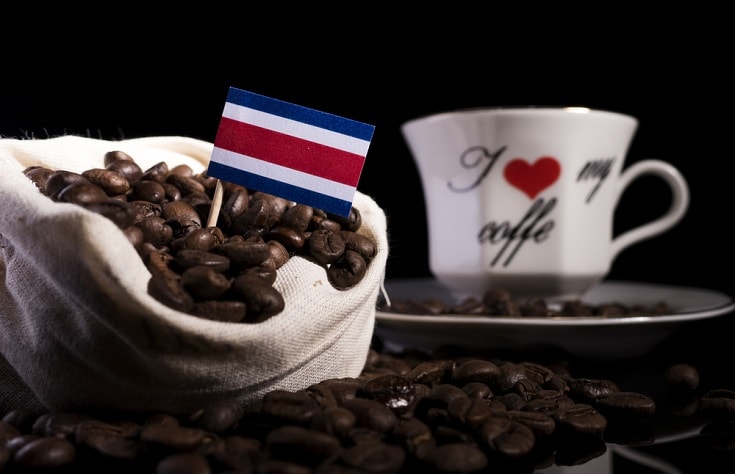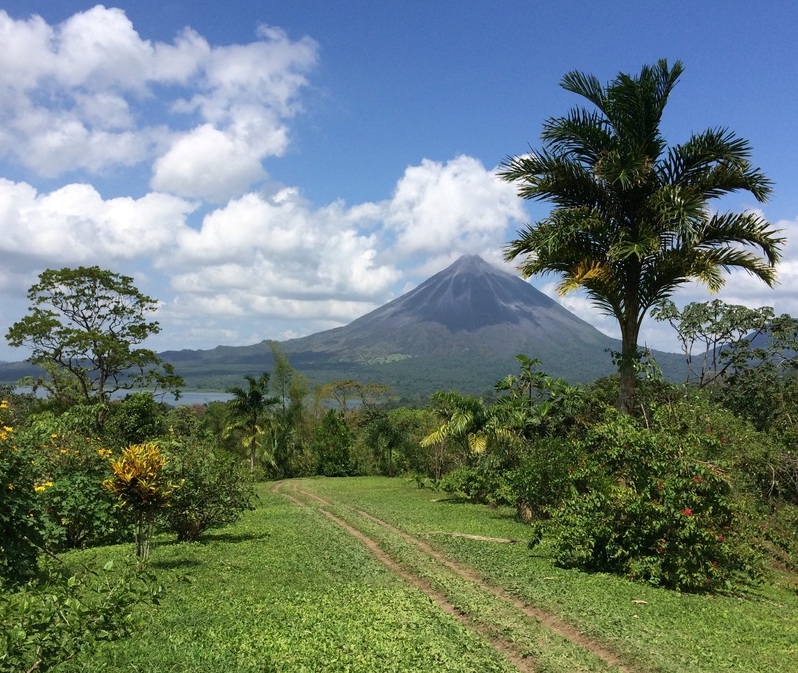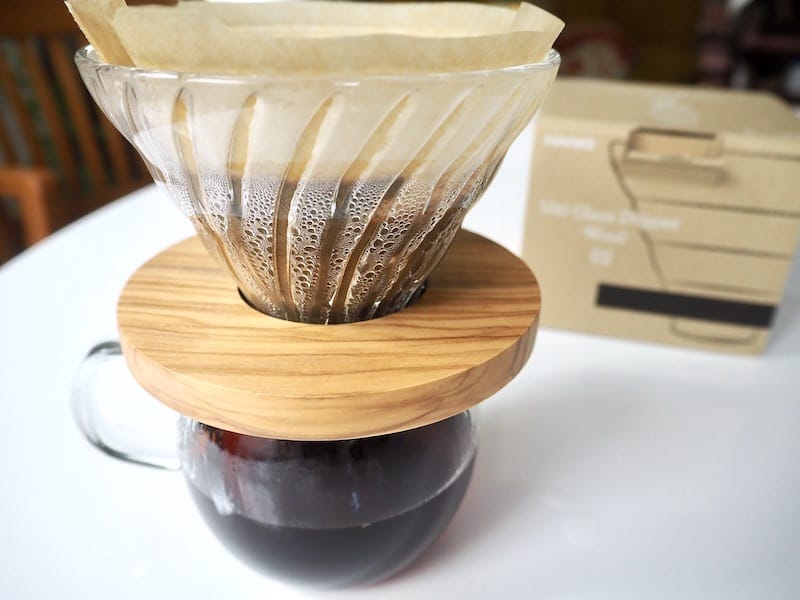
If we asked you to list some countries you associate with coffee, we’re willing to bet that Costa Rica would be near the top. Costa Rica is one of the top coffee-producing countries in the world, ranking 15th overall and exporting an impressive 1% of the world’s total annual coffee production by itself. Costa Rican coffee garners widespread praise for its characteristic light body, high acidity, and playful fruity notes.
In this article, we’re going to give you a quick look at Costa Rican coffee. We’ll touch on the history of coffee in Costa Rica, discuss the modern Costa Rican coffee industry, give you a tour of Costa Rica’s different growing regions, and break down what you can expect from a bag of Costa Rican coffee. Let’s go!

A Brief History of Costa Rican Coffee
Coffee production began in Costa Rica in the late 18th century and gained popularity in the 19th century when the Costa Rican government started giving land to anyone who wanted to grow coffee. By around 1830, coffee became the most successful crop in Costa Rica, outselling tobacco, cacao, and sugar because of this incentive program.

In 1843, Costa Rica’s coffee-producing future was solidified when an English shipcaptain saw the Costa Rican coffee industry’s potential and arranged to ship several hundred-pound bags of coffee back to England. The British were enamored with Costa Rican coffee and decided to invest in it. For almost 100 years, until World War II, England was the primary customer for Costa Rican coffee exports.
In 1989, Costa Rican banned the production of Robusta coffee in an attempt to bolster the country’s coffee reputation. Arabica is generally considered to be the superior coffee variety and has a milder, more pleasant taste. Recently, the ban on growing Robusta coffee has been repealed, but there are still restrictions that limit its production.
Present Day Costa Rican Coffee
Today, Costa Rica exports over 90% of the coffee it produces, amounting to about 15 million bags. Coffee is still Costa Rica’s number one cash crop, and many Costa Ricans are employed by the coffee industry.

An estimated 10% of Costa Rican families make their living through some form of coffee farming. Arabica coffee is overwhelmingly the favored type of coffee grown in Costa Rica because of the former ban and current restrictions. Unlike some other origins, if you decide to purchase Costa Rican coffee, you won’t have to check to make sure it’s Arabica first since it is nearly impossible to find Costa Rican Robusta coffee.
Costa Rican Coffee Growing Regions and Flavors
Costa Rica is geographically situated in an ideal location that facilitates coffee farming. Virtually all of the world’s coffee production comes from tropical and subtropical regions because coffee requires warm temperatures, high humidity, and plentiful rainfall.

There are eight main coffee-growing regions in Costa Rica: Valle Occidental, Tarrazú, Tres Ríos, Orosi, Turrialba, Valle Central, Guanacaste, and Brunca. All Costa Rican coffee is relatively acidic and known for producing bright cups of coffee with floral, fruity-tasting notes.
Tarrazú is widely considered to be the premier Costa Rican growing region and is known for beans that have high acidity, medium body, and excellent aromatics. If you’re only going to purchase one bag of Costa Rican coffee, look for one grown in Tarrazú.
If you aren’t so keen on high-acidity coffee, you should look for coffee grown in the Guanacaste region. This region produces more balanced beans with medium body, medium acidity, and muted floral bouquets.
Preparing Costa Rican Coffee
You can brew Costa Rican coffee using your favorite brewing method, but we encourage you to give a pour-over a shot. Pour-overs highlight acidity and play to the strengths Costa Rican coffee naturally has. For the best results, we recommend purchasing a light roast coffee from the Tarrazú region and brewing it in a V60. Light roasts and highly acidic coffee need to be ground quite fine to ensure proper extraction, so grinding beans yourself is essential.
If you opt for a milder coffee or a medium to medium-dark roast, brewing in a French press is probably your best bet. Another option is to use a Kalita Wave or Clever Dripper since these are sort of a midway point between pure pour-over and immersion brewing.

If none of this sounds good to you, Costa Rican coffee might not be the best origin for you, and that’s alright! Not everyone likes vibrant, acidic coffee, and some people prefer maltier, earthy tasting notes. Those are not typically found in Costa Rican coffee, and you’ll be disappointed if you purchase a bag expecting that kind of flavor.

Conclusion
Costa Rica is one of the most highly-regarded coffee-producing countries in the world despite producing a relatively small amount compared to coffee giants like Brazil, Colombia, and Ethiopia. Still, their coffee is some of the highest quality you can buy, partially thanks to a novel ban on Robusta production that boosted the quality and reputation of the country’s coffee.
If you prefer fruity, floral, acidic coffee, you need to try Costa Rican coffee. Some of the best pour-overs we’ve ever made have been with Costa Rican beans. It’s hard to find more vibrant, bright coffee as perfectly suited for pour-overs anywhere else, and at this point, we’ve stopped trying.
RELATED READS:
- 5 Nicaraguan Coffee Brands to Try Today
- Where Do Coffee Beans Come From? The Seed to Cup Process
- All About Cameroon Coffee: Amazing History & Flavors
Featured Image: Golden Brown, Shutterstock















